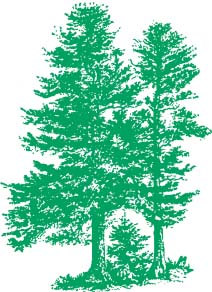Published on Thursday, April 12, 2007 by Reuters
Warming Could Spark N. American Water Scramble: U.N.
by Timothy Gardner
NEW YORK - Climate change could diminish North American water supplies and trigger disputes between the United States and Canada over water reserves already stressed by industry and agriculture, U.N. experts said on Wednesday.More heat waves like those that killed more than 100 people in the United States in 2006, storms like the killer hurricanes that struck the Gulf of Mexico in 2005 and wildfires are likely in North America as temperatures rise, according to a new report that provided regional details on a U.N. climate panel study on global warming issued in Brussels on April 6.
Severe weather already costs North America tens of billions of dollars annually in productivity and damaged property, and those costs are expected to rise, the U.N. report said.
The broadest effects of climate change will be water problems across the entire continent — including more frequent droughts, urban flooding and a scramble for water from the Great Lakes, which border both the United States and Canada.
“Water was an issue in every region … but in very different ways and very different places,” Michael MacCracken, a review editor of the report, said in a telephone interview.
Unlike many continents, North America has no east to west mountain ranges that limit droughts by forcing rapidly moving wet air to release rain, said MacCracken, also chief scientist for climate change at the Climate Institute, a Washington-based nonprofit group.
Cities will also be threatened as glacial melt leads to higher ocean levels. Late in the 21st century, severe flooding that occurs in New York once every 500 years could happen as often as once in 50 years, putting at risk much of the infrastructure in the New York region, the report said.
Droughts would also occur more often in the U.S. Midwest and Southwest as warmer temperatures evaporate soil moisture.
Those droughts could diminish underground supplies like the Edwards Aquifer in Texas, which supplies 2 million people with water, by up to 40 percent, and cut levels of the Ogallala aquifer which underlies eight U.S. states, the report said.
During droughts like the Dust Bowl of the 1930s, U.S. farmers pumped water from underground aquifers to save their fields through irrigation. “Much of that water is now gone,” said MacCracken. “We’ve used up our savings bank.”
Tight underground water supplies could kick off a scramble for large above-ground supplies in the Great Lakes, the report said. Spats have already occurred over diversion of the lakes’ water for distant cities and farms, while calls have increased for channeling water to the Mississippi River to supply U.S. cities during hot summers.
Problems are also expected to intensify as warmer temperatures lower water levels through evaporation. “Climate change will exacerbate these issues and create new challenges for binational cooperation,” the report said.
The tension could be heightened by the fact that a majority of the Canadian population lives close to the Great Lakes, while only a small fraction of the U.S. population reside nearby, MacCracken said.
© Reuters 2007.
